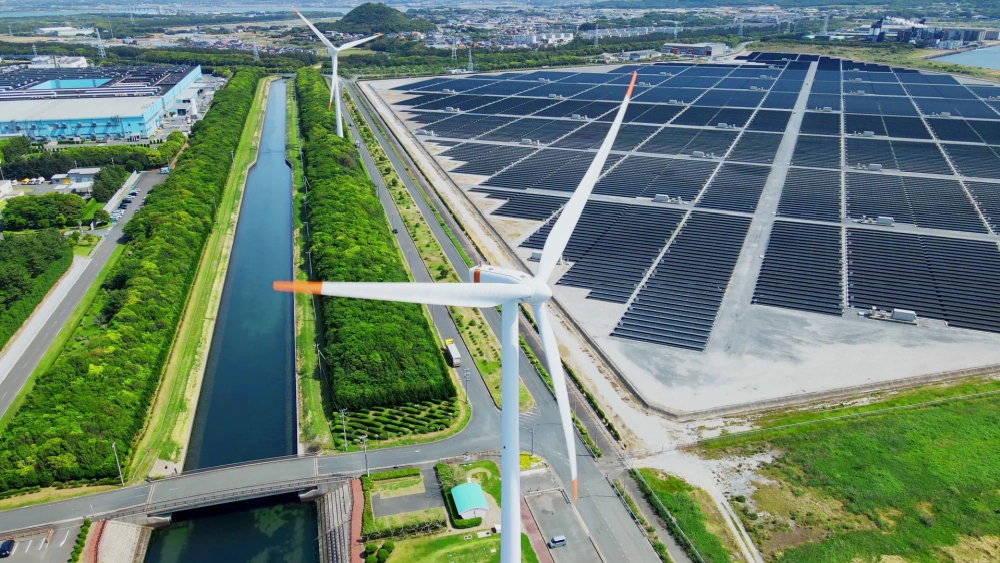
The Environmental Principles Policy Statement - What is it and why is it important?

By Aliki Zeri
10 Jun 2022 | 4 minute read
As part of the government's commitment to strengthen environmental protection, the government submitted its draft Environmental Principles' policy statement for Parliamentary scrutiny on 12 May 2022.
The policy statement, once adopted, will form part of the considerations that a Minister of the Crown needs to have due regard to when making policy or revising existing policy. Policy making includes tabling a proposal for new legislation, or preparing a ministerial statement. Ministers will not be bound by the policy statement in so far as individual decisions are concerned, for example on individual planning applications.
The Principles
The policy statement sets out how the five environmental principles set out in the Environment Act 2021 should be applied to ensure policymakers choose policy options that promote better environmental protection.
The policy statement provides that 'before policies are developed, policymakers should consider whether the policy can prevent environmental harm, promote environmental enhancement, or do both'. This applies primarily to the environmental impact within the UK, but if it is feasible and appropriate to consider the environmental impact overseas, this must be done 'within reason'.
Applying the Principles
The environmental principals are already internationally recognised as successful benchmarks (having formed part of treaties, international law and domestic law in many forms) and are defined in the Environment Act 2021 as follows:
- The Integration Principle – embedding environmental protection in fields of policy that have potential environmental effects. Ministers are asked to consider what the effects of the proposed policy are going to be and how these could be (i) avoided, (ii) minimised or (iii) reduced through alterations to the policy.
- The Prevention Principle – ensuring government policy aims to prevent environmental harm before it has occurred or, where damage has already occurred, to contain existing damage. Ministers are expected to consider this principle at an early stage and apply this before the following two principles.
- The Rectification at source Principle – addressing environmental damage as its origin to avoid the need to remedy its effects at a later date. Ministers are expected to identify the source of the damage (where this is possible) and assess the costs and benefits of rectifying the damage at source, versus other available options.
- The Polluter Pays Principle – the aim of this principle is to ensure that the costs of pollution are borne by the polluter, rather than the person suffering the effects of the damage. In identifying the "polluter", Ministers are asked to consider the corelation between the allocation of responsibility and the benefits to the environment, as well as, what is 'fair' in the circumstances. The amount to be paid and the ways in which "payment" can be effected should also be considered (recognising that a fine is not the only option).
- The Precautionary Principle – assisting policymakers to deal with risks in the face of scientific uncertainty. Ministers are asked to have due regard to this principle where there is a risk of "serious or irreversible environmental harm" and to take a holistic approach. Importantly, "the principle should not unnecessarily hinder innovation due to novelty […] and it should only prevent or deter an innovative development where that risk [i.e. the risk of serious or irreversible harm] outweighs the benefits […]".
Application of the Principles
These principles play a key role in supporting environmental improvement plans (such as the 25 Year Environment Plan) and in achieving net zero commitments. The statement makes it clear that policymakers are to take a proportionate approach, depending on the environmental effects of a policy and whether they are (a) likely to occur and (b) likely to have a significant effect. Policymakers are not expected to carry out a 'deep-dive' assessment into all environmental effects, allowing policymakers to apply the policy statement in a 'lighter-touch way' where appropriate.
Next Steps
The draft statement remains with Parliament for scrutiny until 28 June 2022. It is expected that the final policy statement will be issued in Autumn 2022. It will then be up to individual government departments to put the statement in good use when involved in policy making.
What did the Environment Agency say?
The Environment Agency, whilst welcoming the publication of the draft policy statement, noted that there are opportunities to strengthen certain areas, such as: (i) recognising the fact that the benefit of environmental action are difficult to assess, (ii) including examples to help guide policymakers through the decision-making process and (iii) a requirement for policy makers to keep records of how they have arrived at specific decisions, which could be subject to independent scrutiny.
Our thoughts
The Environment Act 2021 set the scene for a post-Brexit environmental law and policy landscape in the UK. There has been great concern by many environmental commentators that the development of environmental legislation and policy post-Brexit will lead to a watering down of the importance of environmental concerns and priorities in the UK in comparison to the EU. Whether that it likely to be the case is still to be seen but it is notable that the policy statement only requires Ministers to give consideration to "whether the policy can prevent environmental harm, promote environmental enhancement, or do both". This does not firmly embed these matters front and centre of policy and a Minister that has given them consideration but produced policy that fails to prevent environmental harm or promote environmental enhancement has arguably still complied with the principles set out in the policy statement.










